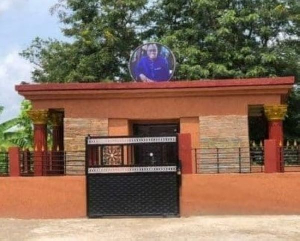Adopting new accreditation requirements: the anchor for grounding the NHIS on a sustainable path
Introduction
The National Health Insurance Scheme (NHIS) was created in 2003 to provide a healthcare financing system in the country in order to improve affordability and access to care by replacing the then prevailing out-of-pocket payment means of getting care at hospitals. However this has not occurred without challenges that continue to rack the smooth operation of the scheme and sometimes generating fears of threat to the ultimate sustainability of it.
Challenges facing the scheme
Chief among these challenges is the never-ending inordinate delays in the reimbursement of claims to providers. Reportedly the nation’s biggest health benefit manager is indebted to providers to the colossal sum of close to a billion Ghana cedis and these include debts spanning over a period of about eight (8) months. This high level of indebtedness in turn has forced providers to persistently issue threats of making justifiable recourse to "cash-and- carry".
Recently, providers such as the Ghana Health Service, Christian Health Association of Ghana, Private Medical Practitioners among others in a joint statement notified NHIS card holders to steel themselves for upfront payment forservices at their respective health facilities. Indeed, my first-hand, in-the-trenches experience with the country’s health community as a pharmacist proves that the terrifying "cash-and-carry" system of funding healthcare provision is back and it is as vibrantly resurgent as ever, although in a different shade.
NHIS beneficiaries, from the pregnant woman to the newborn to the poor to the rich to the elderly, under the new form of "cash-and-carry" are made to finance significant proportions of medical bills at health facilities through upfront cash payments. Subsequently, this drives the NHIS’s original purpose of providing “free” medical care to specifically the most vulnerable in the society—the poor--on the edge of a precipice. This is a stark reality!
Occasionally the scheme’s managers are quick to highlight some of the fiscal challenges facing the NHIA. In a recent news item, Mr Sylvester Mensah, the CEO of the NHIA railed at the overwhelming millions of cedis appropriated monthly to health services providers as reimbursement for claims. According to him, “NHIS is the cash cow to sustaining the healthcare industry and the pharmaceutical supply chain” in the country. This has proven too “overwhelming” for the authority, he further revealed.
All these, as it has previously been made known by the scheme managers, occur in the face of inadequate sources of funding to the scheme. The 2.5% National Health Insurance Levy imposed on certain transactions in the country on several occasions have been casted as hugely inadequate.
Besides the reported cases of attempts to defraud the scheme by some providers, adding to the list of challenges is the above-industry expenditure of 47% spent on pharmaceuticals, a fact once revealed by Dr. Victor Bampoe, the Deputy Minister of Health whilst addressing a meeting with District Directors of Health in the Western Region January this year. Dr Bampoe reportedly revealed that a significant percentage of the NHIS’ expenditure on claims as shown by evidence are actually fictitious and “we need to find a way to hold the galloping expenditure.”
Proposed interventions that may never work
In a desperate attempt to save the scheme from collapsing totally, a number of measures have been suggested. One is the need to increase the NHIS Levy from 2.5% to higher percentage point. Others have also suggested the withdrawal of certain freebies under the scheme to pregnant women, newborns, and the aged: the most vulnerable in the society whose dire needs led into existence the NHIS in an effort to attain some of the Millennium Development Goals.
Viewed objectively and from the prism of the complexities of healthcare provision, unfortunately some of these solutions are disappointing as they are facile as only serve to find expression in the narrative of seeing every problem as a nail when the only available tool—unbridled tax imposition--becomes a hammer. Taking cognizant of the basic fact that cost of medical services and medications will always go up due to economic and market factors, it becomes critical to question whether the solution of levy increment can also continue to keep pace? Apparently no, since levy increment can’t always be a reasonable recourse once it reaches its limit.
The NHIS Capitation may help shave off the scheme’s expenditure on some medical services somewhat, but it is doubtful whether a nationwide implementation as it’s being envisioned will help totally curb the situation at hand—escalating expenditure on claims. As shown through the pilot project in the Ashanti Region, capitation may paradoxically muddy the waters. Notably, the capitation fails to address the singular issue of the NHIS’s persistent high expenditure on medicines prescribed and used for disease treatment and management at medical centers.
Reforming the current health care delivery model
To put Ghana’s NHIS on a solid path of sustainability guaranteeing maximum efficiency and reduced wastage, evidenced-based measures that has passed muster with some countries—Japan, USA, etc.—must be adapted by the NHIA upon careful evaluation.
Enforce existing laws on separation of Medical and Dispensary Services
Health Profession’s Regulatory Bodies (HPRB) Act 857, 2013, and Health Facilities Regulatory Agency Act 828, 2012, enacted by the legislature contain provisions aiming to separate prescribing and dispensing services at hospitals. The architects of these health laws recognized that prescribing and dispensing concurrently by one particular health practitioner or institution has the tendency of eroding internal quality and cost control mechanisms in the health system, which can potentially drive up uncontainable healthcare cost and lowering of standards of practice.
Unfortunately the nation’s biggest health benefit manager and their managers have yet to reform their payment mechanisms to reflect specific provisions contained in these health laws which draw on internationally accepted standards guiding healthcare delivery. The net results? Medical institutions and particularly prescribers in private practices continue to engage in uncontrollable practices fundamentally serving to increase revenues by prescribing unnecessary medicines to patients at the expense of quality healthcare .
Under the current dispensation, a prescriber in private practice can actually prescribe and bill all kinds of medicines and submit as claims for the NHIS to pay, although a medicine may actually not be dispensed to a patient on the site of practice . As it stands now, NHIA still lacks effective mechanisms for checking this particular type of health insurance fraud. In reality, this form of fraud has and continuously to outflank the scheme’s regular clinical audits at health facilities. Without a doubt, this may be contributing to the ballooning expenditure on claims.
When Japan’s data on healthcare expenditure in early 90s indicated the weight of drug costs in its overall medical care expenditures was much greater than the average of industrialized nations, the country pushed forward with the separation of medical and dispensary services in its national health program. According to a 2004 paper published by a Japanese health economist, Junzoh Wuemura, the ratio of drug costs to the country’s total expenditure on health, which stood at 22.9% in 1991, declined to 16.5% in 1995 following the implementation of this measure.
This same measure, when adopted by South Korea in 2000, caused antibiotics sales to fall 32.7% by 2003 from 1999 levels, and its antibiotics prescription rate per insurance claim for clinical outpatients has been falling according to the country’s Ministry of Health & Welfare website.
In the Ghanaian healthcare context, fictitious expenditure on health, particularly on medicines can be averted by a strict 72-hour dispensary/pharmacy services in private medical, dental, and maternity homes settings for inpatients in facilities with a defined low bed capacities. In addition to this, the NHIA should refuse payment for outpatient pharmacy services in these facilities, particularly those in urban areas. Condition-based concessions may be given to facilities in underserved areas. For such facilities, the Pharmacy Council and the NHIA can strike an agreement grounded on the provisions of the HPRB Act 857.
Medicines and Therapeutic Committee (MTC) as an accreditation requirement
Establishment of Medicines and Therapeutic Committees (MTCs) in all levels of healthcare is strongly recommended by the World Health Organization. Indeed, the Ghana National Drug Policy, 2004, reinforces WHO’s recommendations for MTCs establishments in health facilities (government, quasi-government and private).
As shown by evidence, functional MTCs ensure that patients are provided with the best possible cost-effective and quality care at medical centers. MTCs are tasked to address inappropriate use of medicines that leads to wastage of resources. Additionally, MTCs can significantly improve drug use and reduce costs in hospitals and other health care facilities by encouraging evidenced-based prescribing; promoting good dispensing practices; promoting and instituting interventions to improve patients’ adherence to treatments.
In developed countries, evidence of functional MTCs in health facilities remains a strict accreditation requirement for service providers intending to operate under health insurance schemes. NHIA should be seeking to explore this area for checking the escalating cost of claims submitted for reimbursement while improvement in quality of care is maintained as the cardinal focus.
Conclusion
Ghana’s NHIS is currently facing major challenges threatening the scheme’s sustainability and upending the intentions with which it was established—funding health care cost for the poor. Recent developments however reveal that the previously defunct cash and carry system is back. NHIA cannot afford to keep bemoaning the ever-rising expenditure on claims submitted by health facilities without adopting new measures that have passed the test of time in other countries. Nonetheless, NHIA’s adoption of a payment mechanism in line with separation of prescribing and dispensing services has the potential of reversing the ominous—depriving the millions of the most vulnerable in our country of access and affordability to healthcare .
By:
Frank Kumi
macfancy2g4@yahoo.com
The writer is a senior pharmacist at The King’s Medical Centre, Bontanga-Tamale, Northern Region with special interest in health economics.
Opinions of Monday, 6 April 2015
Columnist: Kumi, Frank
The anchor for grounding the NHIS on a sustainable path
Entertainment













